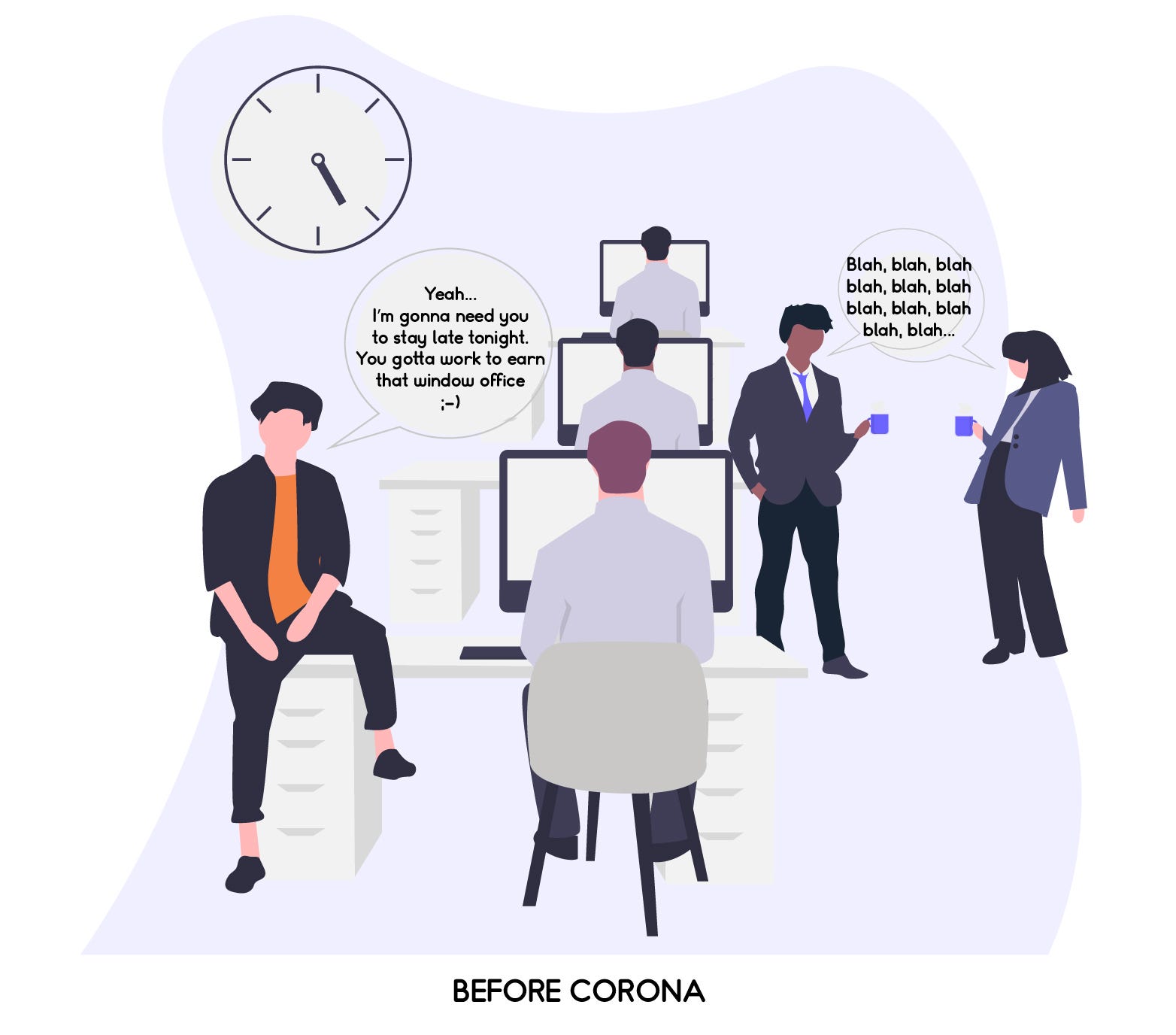The whole world is currently engaged in a social experiment to reorganize around the COVID-19 pandemic. Those who can continue their work from home are experimenting and learning-by-doing to work in new ways. Organizations are adapting quickly to the new normal, and they are seeing their workforce pivoting to work productively from home.
Marleen Huysman, head of KIN Center for Digital Innovation, shares her thoughts on how the COVID-19 pandemic may broadly shape the future of work.
1. The culture of control will decrease
Companies and management are now living out their fear of “losing control” of their workforce when they let employees work remotely. Remote work is gaining acceptance as management “sees” that their workforce can be productive despite the fact that they are not physically in the office or meeting face to face.

2. We will have fewer, shorter, and less in-person meetings
In many organizations, there’s a culture of in-person meetings that aren’t necessarily effective or needed. As employees demonstrate their autonomy, the need for meetings, and especially in-person meetings will be called into question. Employees will challenge requests to travel far and wide, and companies that embrace working from home will be seen as more attractive employers. As a result, there will be a positive impact on the environment, as well as on employees’ stress levels and mental health.
“We see many organizations rapidly digitalizing, using all kinds of video conferencing services and online communication platforms, and we can expect to see more examples of simulation technologies, e.g. games and hybrid reality used to enhance the experience of working together, though we are physically at home. Fortunately, we are relatively well prepared; most people are already online. Imagine this would have happened 20 years ago.” — Marleen Huysman
3. Physical space will be utilized in new ways
If working from home becomes the new normal, working at the office will become a deliberate choice. People may start meeting in homes to work together; we observed this behavior when studying a large multinational that had closed their Dutch office for a few months. The need for office space will be drastically reduced and organizations will use this to their economic advantage, e.g. split up the use of the office space per team or department to meet in person only on specific workdays (something we have been experimenting with at KIN). Additionally, the full open office plan may disappear to prevent the spread of pathogens.
“At KIN Center for Digital Innovation, we have always been frontrunners in the future of work. We’ve been using laptops, collaborating via Slack, video calling into sessions we cannot join and sharing files over the cloud for a long time. Only on Tuesdays and Fridays, is it semi-mandatory to gather at the Vrije Universiteit to see each other in person.” — Marleen Huysman
4. Many jobs will face redundancy
Besides the jobs that will be lost due to the related economic crisis, COVID-19 will expose the fact that not all jobs are really needed. Many managers will become redundant as employees demonstrate their ability to work autonomously because there will be less need to control the workforce.
5. People will have to find their own rhythms
Adapting to the mix of work and home life in the same space means that employees will have to find what works for themselves, both in their spare time as well as in their jobs. Now that the 9 to 5 routine has been interrupted, working around personal rhythms can help employees become more effective. This will, in turn, complicate a return to the full “working from the office” mode of working. However, individuals will need to develop new habits to structure themselves, put boundaries to protect work-life balance, and protect their mental health, especially those living alone or with young children.

Find your way in digital wonderland
Is this the new future of work? As an academic research center studying digital innovation, our mission is to help organizations look beyond the hype and find their way through this “digital wonderland”.
We do this in multiple ways: by organizing activities for our KIN Business Network members, and through our executive programs Digital Innovation & Transformation (DIT) and Business Analytics & Data Science (BADS).




